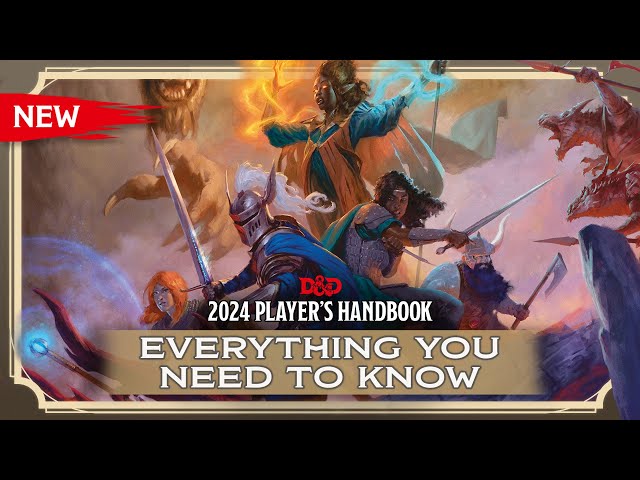Dungeons and Dragons lead designer Jeremy Crawford is fulfilling his role as DnD explainer-man, clearing up a load of nitty gritty questions about the upcoming 2024 Player’s Handbook in a recent round of YouTube interviews. One of the questions that’s come up several times in these interviews is how older 2014 content works with the new 2024 rules.
From the moment they announced ‘One DnD’, Wizards of the Coast has always claimed that the new rules content will be ‘backwards compatible’ with the old DnD books. Recently, a lengthy video on the DnD Beyond channel went into more detail about just what that meant.
But while the explanation Crawford has given in these recent interviews is clear and succinct, it also seems to contradict what he said on the same topic only one month ago (at about 33 minutes in, if you’re curious).

Back then, he stated that players should not “try to mix and match pieces of the two Players’ Handbooks” and should pick one set of rules or the other. And he agreed that “you can play a character from this new Players’ Handbook right next to a character using the 2014 Player’s Handbook”.
The new explanation clarifies that you absolutely can mix and match aspects of the two books, provided you’re only using the older rules for content that’s not in the new rules.
For instance, if there’s a DnD subclass like the Necromancer you want to play, well, that’s not in the new Player’s Handbook. But you can still use the 2014 version of that subclass alongside the 2024 rules for species, DnD backgrounds, and feats, and create a perfectly legal 2024 character.

However, if there’s a new version of the DnD class, feat, spell, or species that you want to play, and you’re playing in a 2024 game, the designer says you should use the 2024 version of that feature.
In an interview with The Character Sheet, Crawford explains that “we’re doing that largely so we don’t end up at tables with two different versions of the same subclass”.
Which seems very sensible – we can see how that would be confusing – but again, while we see the logic, it doesn’t quite fit the line from June which claimed both 5e and 2024 versions of characters could share the same space.
We’re going to assume Crawford’s more recent and more detailed explanation is the correct one, and chalk the old version up to either a miscommunication from Wizards, a misunderstanding on our part, or something that has subtly changed at the last minute.
Either way, it’s great to see that all the game content DnD has produced over the years, from the stranger DnD races like the Tortle 5e, to the lengthy list of subclasses, isn’t just going to be thrown out.
Source: Wargamer




